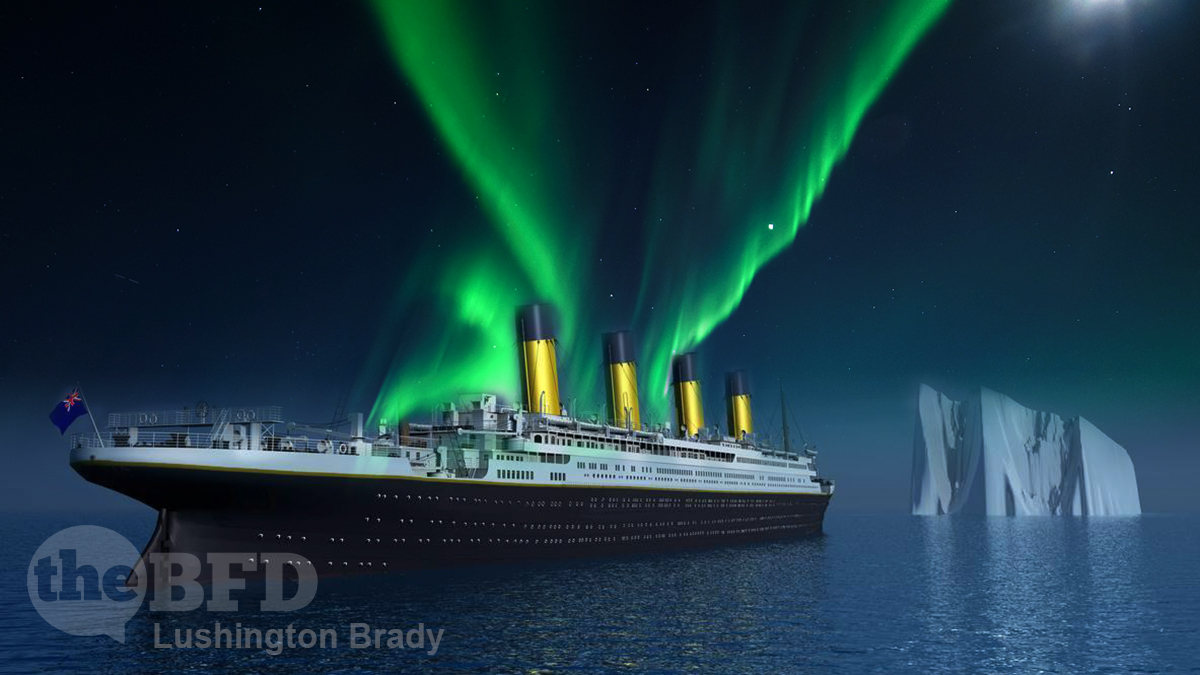More than a century after it went to the bottom of the Atlantic ocean, the Titanic continues to fascinate. You might think that by now there was nothing left to mine in the story of the world’s most famous shipwreck. But research continues to uncover tantalising new details.
Space weather – in particular, the vicissitudes of our nearest star, the Sun – is increasingly known to have far-reaching effects on the Earth. Everything from climate change to communications technology are known to be at the mercy of space weather.
Now, a new study suggests that space weather may have played a pivotal role in the Titanic disaster.
Eyewitnesses described aurora glows in the region as the Titanic went down, with one observer testifying that “the northern lights were very strong that night,” Mila Zinkova, an independent weather researcher and photographer, reported in a new study, published online Aug. 4 in the journal Weather.
Come now, the northern lights are very pretty and all, but what could that have to do with sinking the world’s most famous ocean liner?
Auroras are formed when solar storms fling out high-velocity streams of electrified gas into space. When these charged particles collide with the Earth’s atmosphere and its magnetic field, the familiar shimmering curtains of green, red, purple and blue result.
A solar storm (also called a geomagnetic storm) powerful enough to produce an aurora may also have affected compasses and wireless communication on the Titanic, and on nearby ships trying to come to her aid. Even a small disruption might have been enough to doom the vessel, Zinkova said in the study.
And the northern lights were highly visible when the Titanic sank. James Bisset, second officer of the RMS Carpathia (the ship that would rescue Titanic survivors) wrote in his log on the night of April 14, 1912: “There was no moon, but the Aurora Borealis glimmered like moonbeams shooting up from the northern horizon.” In an entry made five hours later, Bisset noted that he could still see “greenish beams” of the aurora as the Carpathia neared the Titanic’s lifeboats, Zinkova reported.
Survivors also described spotting the northern lights from their lifeboats at around 3 a.m. local time. The glow “arched fanwise across the northern sky, with faint streamers reaching towards the Pole-star,” Titanic survivor Lawrence Beesley wrote.

Powerful solar storms have been known to disrupt electronic communications, to the point of melting whole telegraph systems in the 1859 “Carrington event”. The same solar storm that created the light show noted by Titanic survivors may also have affected its compass.
A deviation of only 0.5 degrees would have been enough to steer the ship away from safety and place it on its fatal collision course toward an iceberg, Zinkova said in the study.
“This apparently insignificant error could have made the difference between colliding with the iceberg and avoiding it,” she wrote.
The solar storm also played havoc with rescue attempts.
Radio signals that night were also “freaky,” operators on the ocean liner RMS Baltic reported (the Baltic was one of the ships that responded to the Titanic’s distress call, but the RMS Carpathia got there first, according to the Armstrong Browning Library at Baylor University in Waco, Texas). SOS signals sent by the Titanic to nearby ships went unheard, and responses to the Titanic were never received, according to Zinkova.
“The official report of the Titanic sinking suggested amateur radio enthusiasts had caused interference, by jamming the airwaves, and so prevented the accurate dissemination of emergency signals to other ships in the vicinity,” she wrote.
“However, at the time they had incomplete knowledge of the influence that geomagnetic storms may have on the ionosphere and disruption to communication. It is proposed here that the ongoing moderate to strong geomagnetic storm near the aurora had a negative impact upon the receipt of accurate SOS signals by nearby vessels, as well as interference from amateur radio operators.”
Although the Titanic sank 108 years ago and, according to the most recent dives, the wreck itself is fast disintegrating, its story continues to fascinate and inform.
If you enjoyed this article please consider sharing it with your friends.


